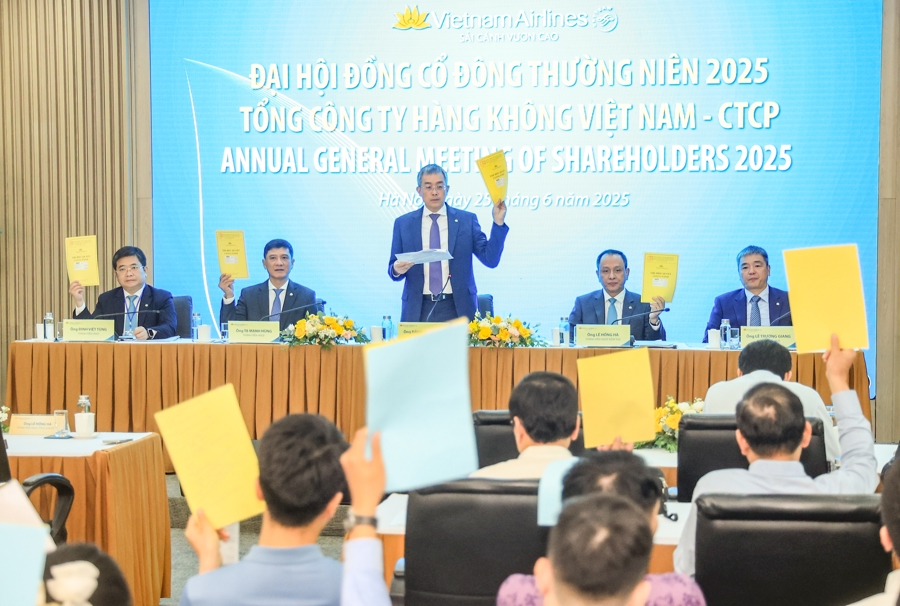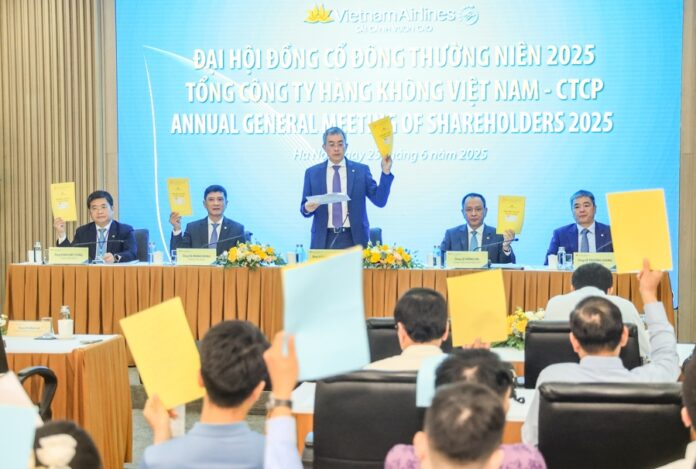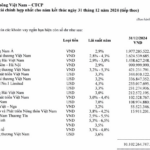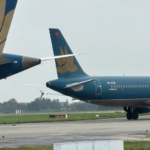On June 25, Vietnam Airlines, the country’s flagship carrier, held its 2025 Annual General Meeting of Shareholders to approve the audited 2024 financial statements and set production and business plans and orientations for 2025.
RECORD-HIGH PROFITS
According to the 2024 production and business results report, the Corporation’s consolidated revenue reached VND 112,776 billion, and consolidated after-tax profit reached VND 7,958 billion, marking the highest profit in the history of Vietnam’s National Airline.
In the past year, Vietnam Airlines safely operated 139,700 flights, transported 22.75 million passengers, achieved an on-time performance of 85%, and maintained a fleet readiness rate of 95%. The national carrier’s network has been fully restored and expanded compared to the pre-pandemic period, with 58 international and 38 domestic routes connecting 52 destinations in 18 countries. Vietnam Airlines remains the only airline serving all domestic destinations in Vietnam.
Key areas such as flight operations, technical services, cargo, and e-commerce recorded positive results. Subsidiaries such as VAECO, SKYPEC, VIAGS, NCTS, TCS, NCS, and VACS continued to play a pivotal role in the Corporation’s ecosystem, significantly contributing to the consolidated results.
Notably, Vietnam Airlines successfully transitioned to new Passenger Service Systems (PSS) and Maintenance, Repair, and Overhaul (MRO) IT systems, enhancing service quality and optimizing aircraft maintenance and repair processes.
In the first six months of 2025, Vietnam Airlines’ CEO, Le Hong Ha, reported positive signs in the Corporation’s production and business activities.
The transport volume is estimated to exceed the plan by 1.9% in market share; air transport revenue is estimated at VND 22,100 billion; and pre-tax profit for the second quarter is estimated at VND 1,000 billion. For the first six months of the year, Vietnam Airlines’ production and business activities are estimated to have achieved a pre-tax profit of over VND 4,000 billion.
Amid challenges in the aviation industry due to geopolitical tensions driving up oil prices, directly impacting production and business costs, thanks to the attention and guidance from the Government and timely response strategies, Vietnam Airlines overcame difficulties and achieved remarkable results, as shared by CEO Le Hong Ha.
In addition to the challenges posed by raw material prices, exchange rates also pose risks to Vietnam Airlines’ production and business activities. According to Tran Van Huu, Chief Financial Officer of Vietnam Airlines, foreign currency expenses currently account for 65% of the Corporation’s total operating expenses.
“To mitigate risks, Vietnam Airlines has implemented solutions to strengthen its international network and proposed solutions to balance foreign currency inflows and outflows,” said Mr. Huu.
In the first half of 2025, the airline launched five new international routes to Beijing, Bangkok, Bengaluru, Hyderabad, and Busan and resumed four important routes to Moscow, Bali, Kuala Lumpur, and Hong Kong. Additionally, two key routes to Milan and Copenhagen will be launched in July and December, respectively.
ASPIRING TO BECOME ONE OF THE TOP 2 AIRLINES IN SOUTHEAST ASIA
Sharing the business plan for 2025, Vietnam Airlines’ leadership announced that the Corporation aims to transport 25.4 million passengers and 346,000 tons of cargo, an increase of 11.6% and 11.5%, respectively, compared to 2024. Additionally, consolidated revenue is expected to reach VND 116,715 billion, a 3.5% increase compared to the same period.
Moreover, the contribution of ancillary services to the Corporation’s revenue is targeted to increase from 5% to 9% in the period leading up to 2030, equivalent to the revenue from the airline’s transport business.
Notably, Vietnam Airlines aspires to become one of the top 2 airlines in Southeast Asia in terms of scale, aiming to be among the top 10 most favored carriers in Asia, maintaining its 4-star service standard, and striving for the 5-star international standard.
To realize this goal, the airline is implementing a comprehensive restructuring plan, including asset, capital, and investment portfolio restructuring and introducing a new governance model.

Digital transformation remains a strategic priority for Vietnam Airlines, which is partnering with technology leaders such as VNPT and FPT to provide wifi services, modernize its systems, enhance automation, and improve the overall customer experience throughout their journey.
In parallel, a comprehensive electronic identification system has been operationalized in the spirit of Resolution No. 57-NQ/TW on national innovation and digital transformation.
Regarding sustainable development, Vietnam Airlines is crafting a comprehensive ESG roadmap with specific targets for carbon emissions reduction, fuel efficiency, and the exploration of sustainable aviation fuel (SAF). The airline is a pioneer in using SAF on international routes, despite the higher cost compared to conventional fuel.
The airline also focuses on developing high-quality human resources, building a modern corporate culture, and enhancing governance capabilities in line with international standards.
Regarding the expansion of its international route network, Vietnam Airlines’ leadership affirmed that the airline would synchronously implement key solutions to enhance its operational capacity, improve operational efficiency, and expand its market reach.
Investing in a new generation of aircraft is a strategic task. The airline will complete the preparations for the project to invest in 50 modern narrow-body aircraft with a total investment of more than VND 92,000 billion, expected to be implemented from 2030 to 2035. The project aims to improve fuel efficiency, reduce emissions, and enhance competitiveness.
Vietnam Airlines is also expanding its investment in technical infrastructure at strategic airports such as Long Thanh and Noi Bai and strengthening ancillary services such as technical services, catering, and logistics to complete its value chain.
Commenting on the competitive landscape in the aviation market, Vietnam Airlines’ Chairman of the Board of Directors, Dang Ngoc Hoa, stated that competition is an inevitable market demand and should be approached with a calm and proactive mindset.
“Instead of worrying, we see this as an opportunity and a driving force for the Corporation to embrace change, from enhancing governance capabilities and developing human resources to sustaining growth and solidifying our position as the country’s leading carrier,” said Mr. Hoa.
In this context, Vietnam Airlines Group aims to consolidate its domestic market share, maintaining a ratio of approximately 50%, while aggressively expanding its international network to become one of the two largest full-service carriers in Southeast Asia.
The Circular Economy’s First Chapter: Unveiling Vietnam’s Pioneering Endeavor
For the very first time, this method was implemented in Vietnam at the Dung Quat Oil Refinery (BSR) during its fifth overall maintenance cycle (TA5).
“Breaking: Dramatic Footage of Two Planes Colliding at Noi Bai Airport”
Two aircraft were involved in a ground collision at Noi Bai International Airport. The incident occurred while the planes were taxiing on the runway, sparking concern among authorities and passengers alike.
The Chairman of Phat Dat Real Estate Development Corporation (PDR) Reveals Two Exciting Opportunities: Prime Land Holdings in Ho Chi Minh City and Binh Duong Province.
“With a formidable portfolio and an impressive track record, Phát Đạt (PDR) has secured approval for two prestigious high-rise development projects, spanning over 45 hectares in Binh Duong. In addition, they have acquired 23.9 hectares of land for a Build-Transfer project in Ho Chi Minh City, solidifying their position as a leading real estate developer in Vietnam.”





















